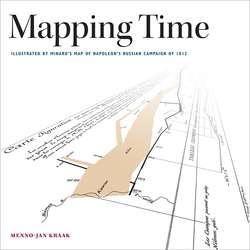Читать книгу Mapping Time - Menno-Jan Kraak - Страница 13
На сайте Литреса книга снята с продажи.
As a historical event
ОглавлениеThe Napoleonic Wars rank as one of the important episodes in European history, and few events during the conflict were more important than the invasion of Russia. Many of the maps that study this phase of history depict this event, from small annotations in generic history atlases to detailed overviews in dedicated atlases. One of the first maps to illustrate the Russian campaign appeared in an atlas published before Minard’s map entitled Allison’s History to Europe (see chapter 1, figure 1-4).
The maps featured in the next series are all derived from historic atlases. Each of them tells their story using a distinct design. Figure 2-16, published in 1912, relies on the reader to deduce the path of Napoleon’s campaign in Russia from the pattern that the names of towns and rivers create, and therefore does not need to delineate a precise path. Those familiar with the narrative of the campaign can locate the sites of major events, like the Battle of Borodino (see inset) and the crossing of the Berezina River, simply by looking for the places where the density of geographical names increases. The map also lacks any dynamic representation of time.
Figure 2-16. Central Russia during the War of 1812. The map shows the important place names and physical features that played a role in Napoleon’s invasion
In contrast, figure 2-17 introduces a sense of relative time by inscribing arrows alongside the dotted lines that pass along a supporting topography of river and place names (which, like Minard’s map, are spelled in Dutch) in order to illustrate the directional path of Napoleon’s Grand Army. This communicates notions of both direction and order (that is, a start and an end). The map lacks the chronology that absolute dates provide. Still, it constitutes a basic flow line map.
Figure 2-17. Route followed by Napoleon according to a Dutch school atlas.
Figures 2-18 and 2-19, like the previous map, use lines to indicate Napoleon’s path to Moskva. Both maps use different sets of symbology to indicate the French army’s advance and retreat, although both emphasize the advance over the retreat based on choices of line color and line symbology. The map from the German school atlas in figure 2-18 displays dates next to important sites in the army’s campaign, in order to plot its march through Russia. This makes it possible, for example, to derive information about how long Napoleon stayed in Moskva. The inset in figure 2-19, providing a detail from a European overview map from the same atlas, shows the areas affected by the campaign. Looking at the two maps side by side reveals the similarity of their topographic backgrounds. Rivers, for example, possess the same detail. It seems likely that both publishers were aware of each other’s work.
